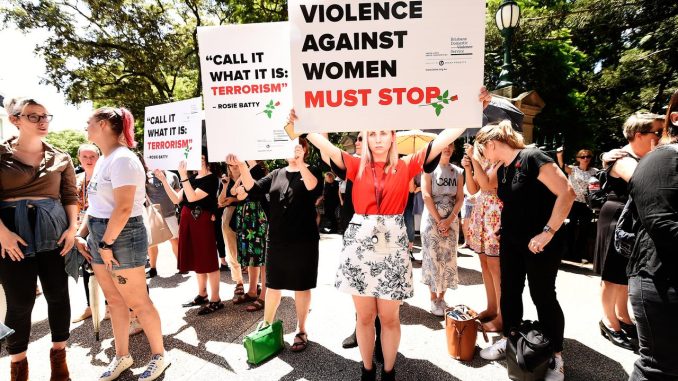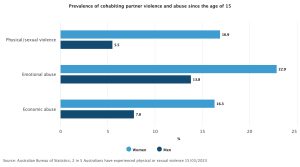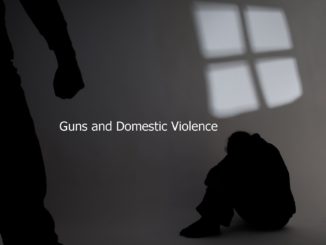
Proposal and Story angle
I am planning to write a news commentary about the worsening of Australia’s domestic violence issue, while also calling for attention and oversight towards the Australian, state, and territory governments’ release of the National Plan to End Violence against Women and Children 2022-2032 (National Plan).
Story angle: This article compares data released by the Australian Bureau of Statistics (ABS) in 2016 and 2023. Similar rates of physical and sexual violence were observed in 2021-22 compared to 2016. Rates of sexual and physical violence have decreased for both women (from 17% in 2016 to 16.9% in 2021-22) and men (from 6.1% to 5.5%). However, it is still evident that Australia is stagnating in addressing domestic violence, with millions of people affected by family violence since the age of 15. In particular, more than a quarter (26%) of women who have experienced physical or sexual violence reported that they were unable to seek help at least once during the COVID-19 pandemic for safety reasons. In this commentary, I will explore the psychology of victims of physical and sexual violence, and how delaying seeking help can exacerbate family violence. I also call for the urgent implementation of the 2022-2032 National Plan to End Violence against Women and Children, with an emphasis on early intervention for family violence.

Source of Information
According to the Status of Women Report Card 2023 released by the Department of the Prime Minister and Cabinet (PMC), Australia is ranked 43rd internationally for gender equality. Furthermore, one in four women and one in thirteen men have experienced sexual violence in their lifetime. Comparing these figures with the Australian Bureau of Statistics (ABS) data from 2016, the improvement is not significant. The overall Australian society, including the government, does not give enough attention to the issue of domestic and sexual violence. This attitude and lack of proper standards towards violence have created an environment where violence is prevalent, and caused millions of people suffering.
Moreover, over one-third (34%) of Australians do not know that women are more likely to experience sexual violence from someone they know rather than a stranger, and two-fifths of Australians do not know where to get help for domestic violence. This indicates a lack of social education regarding domestic violence. The article also educates people, through interviews with victims of violence and abuse, on what constitutes violence against women, such as “yelling, pushing, clenching fists, pulling hair, pushing against walls, and choking with fists.” The article urges victims to call the hotline for help and participate in assistance programs. It also calls for increased social education to raise awareness and prevent domestic and sexual violence.
Finally, this article will briefly outline the contents of the 2022-2032 National Plan. Last October, the New South Wales government tested early intervention in five communities. This week, Governor Chris Minns announced a $7.5 million funding extension to expand the program to an additional five communities for another year. Due to intermittent funding, the implementation of this plan has been slow. The article emphasizes the urgent need for swift and effective intervention and calls for increased funding for prevention investment. It also highlights how all sectors of society, including businesses and workplaces, media, schools and educational institutions, families, domestic and sexual violence departments, communities, and individuals, must work together to respond to this 10-year national plan.
Target Publication and Audience
Recently, there have been several articles on ABC News regarding domestic violence in Australia, all seeking to raise awareness of the severity of the issue and mobilize support for the implementation of the 2022-2032 National Plan. Therefore, ABC News is the preferred online publication for this article.
The target audience is divided into three parts: individuals, groups, and national. Individuals include current and former victims of domestic violence. Groups include organizations and conferences focused on protecting domestic violence victims, such as the “Stop Domestic Violence Conference.” Finally, the national government departments responsible for implementing the 2022-2032 National Plan are also included.
Multimedia, Hypertext, and Interactivity
This commentary will include the following content:
- Data from Australian Institute of Health and Welfare(AIHW)
- Media Release from Australian Bureau of Statistics (ABS) and Personal Safety Survey (PSS)
- An article on interviewing domestic violence victims in 2019
- Expended data from 2023 Status of Women Report Card
- Detailed data on domestic violence in Australia comes from AIHW
- National Plan to End Violence against Women and Children 2022–2032 from Australian Government Department of Social Services
- Video Interview with a Domestic Violence Survivor with Ally Langdon


Be the first to comment